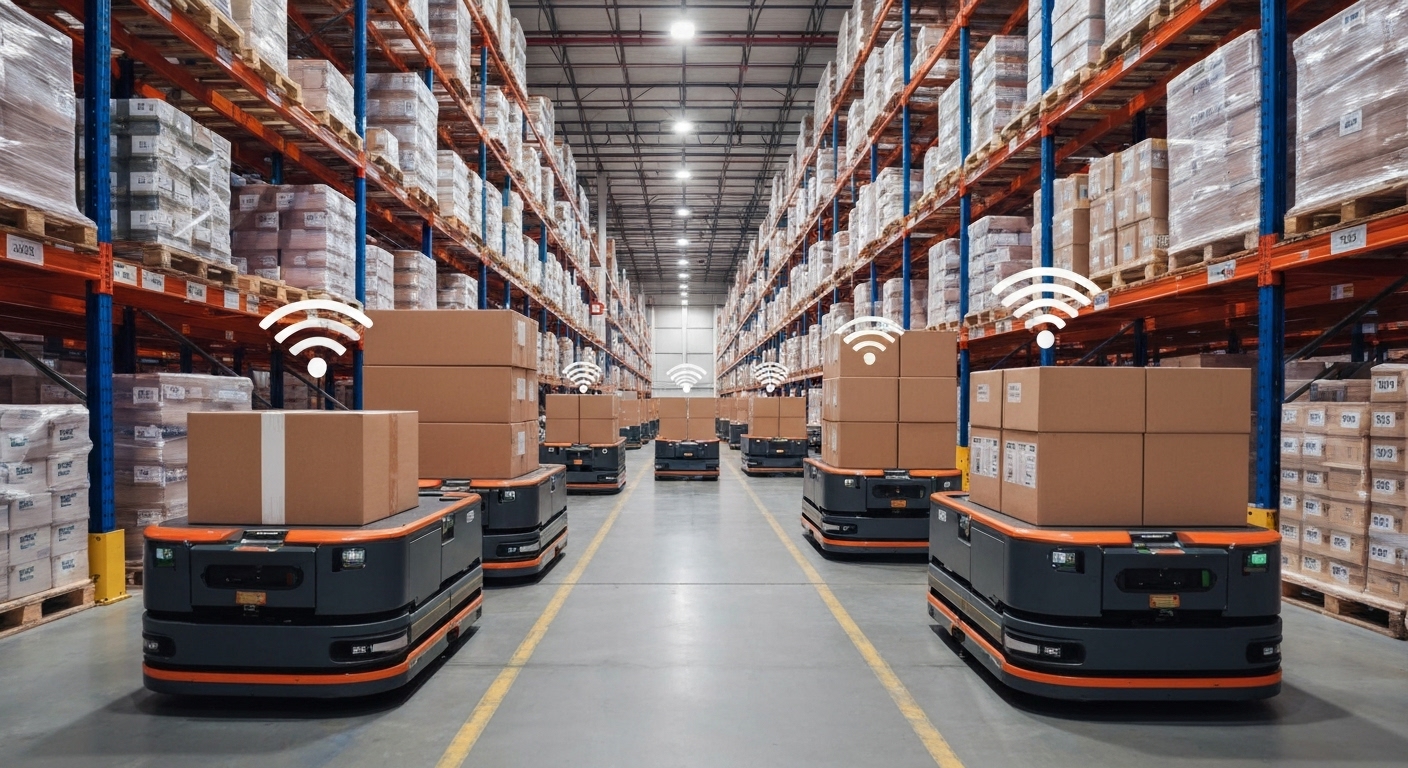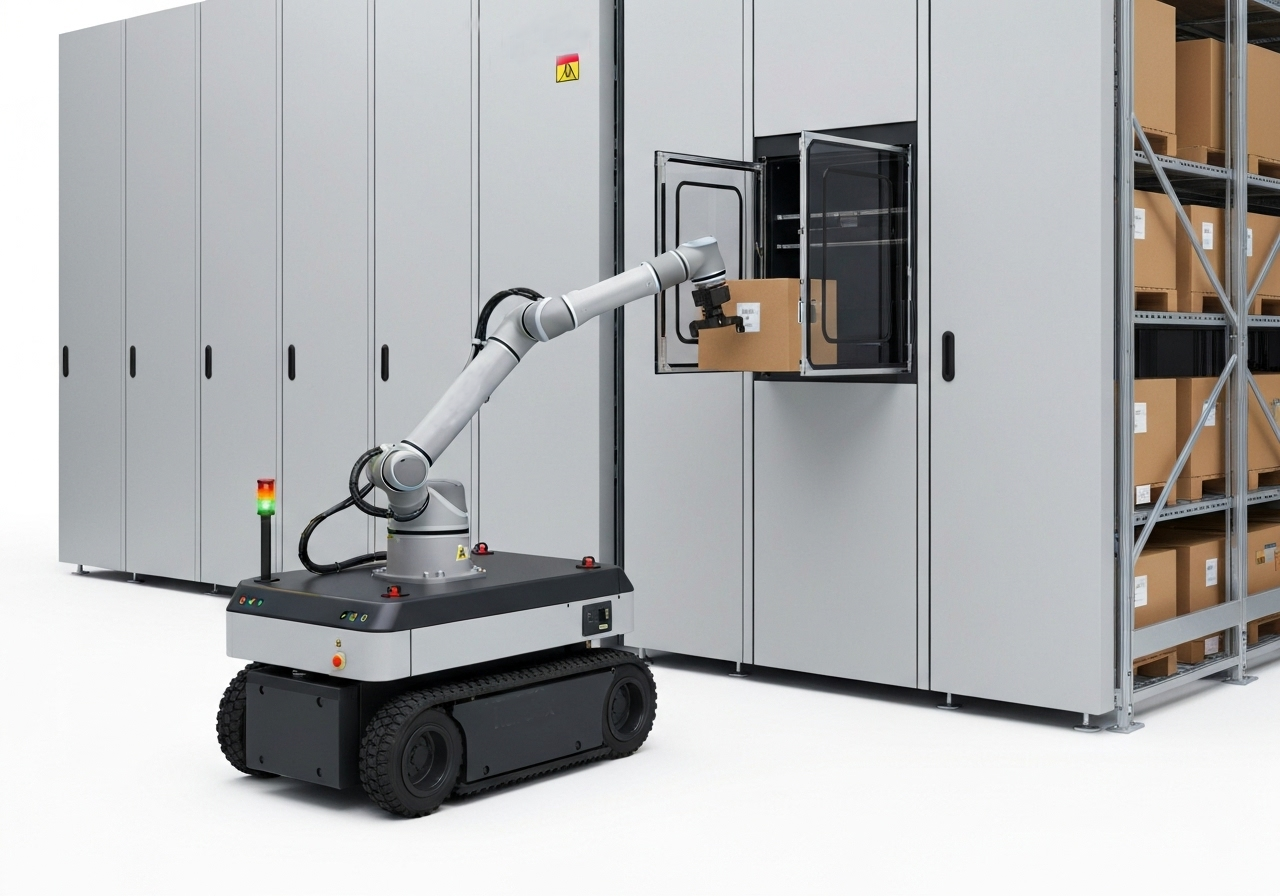
Why AGVs and AMRs Need Ultra-Reliable Real-time communication
Automated Guided Vehicles (AGVs) and Autonomous Mobile Robots (AMRs) are the backbone of modern logistics and production. But their performance and safety depend on one critical factor: communication that is ultra-reliable and truly real-time
Safety Without Compromise

AGVs and AMRs often share space with people, forklifts, and sensitive equipment. In busy environments, a delayed stop signal or a missed update can create risks. Ultra-reliable, low-latency communication ensures vehicles respond instantly to danger, emergencies, and control commands, keeping people and assets safe.
For instance, when a mobile AMR arm is picking a product from an Automated Storage and Retrieval System, both systems should be able to signal anomalies to the other party and make it stop without any delay, before damage occurs and all operations grind to a halt. Or, when an operator presses the emergency stop button on the fixed system, ideally the AMR should also stop moving to avoid injury or damage.
Safety is not just best practice, it’s a requirement. International standards such as ISO 3691-4 (driverless trucks and their systems) and the European Machinery Regulation 2023/1230 or the US UL 4600 standard, specify strict requirements for safe control and emergency stopping. Meeting these standards depends on having communication networks that are both reliable and immediate.
Our technology doesn’t just support low average latency like other wireless networks, but real “bounded” latency, meaning that the latency will consistently remain below a set value. Read more about this in our wireless OpenSafety test report.
Smooth Manual Control
Even the smartest AMR sometimes needs help.
- When teaching a robot a new path
- When guiding it out of a blocked position
- When a sensor goes offline
Any delay between input and robot response makes the process frustrating at best, unsafe at worst. Real-time communication enables smooth, responsive manual control whenever human intervention is needed.
Perfect Fleet Coordination
Large robot fleets only work when every vehicle stays in sync. Reliable real-time connectivity allows AGVs and AMRs to adjust speeds, manage intersections, hand over loads, and reroute instantly, avoiding traffic jams and keeping workflows smooth.
Robot Arms Require Zero Delay
Many AMRs carry robotic arms for picking, placing, or assembly. Here, latency matters more than ever: a fraction of a second can mean missed precision or unsafe motion. Ultra-reliable communication guarantees accurate, smooth operation of mobile manipulators.
Reliability for Critical Operations
Industrial environments can’t afford unstable links or lost data. Navigation updates, safety messages, and control commands must arrive every time, without delay. Ultra-reliable networks with packet loss down to 1 in a million, deliver the stability mobile robots depend on.
Reliability also means that there are no problems with wireless coverage. For instance, when radio-absorbing goods (metal, liquids, …) are temporarily stored on a shelf in your warehouse, or when a forklift passes by, you can’t afford to lose communication with your AMR.
Our mesh network architecture can reroute the data via another nearby node which can also be the nearest other AMR. But it’s also easy to temporarily plug-in an additional antenna in a zone with weak reception, due to certain goods being stored. You can easily recover it when the problem disappears and use it in another spot.
The Bottom Line
- AGVs and AMRs are only as capable as the networks they run on.
- Ultra-reliable real-time communication is not optional—it’s the foundation of safe, precise, and flexible automation.
Do you want to know more?
Read more about our patented wireless technology on our technology page, or get in touch with us.
